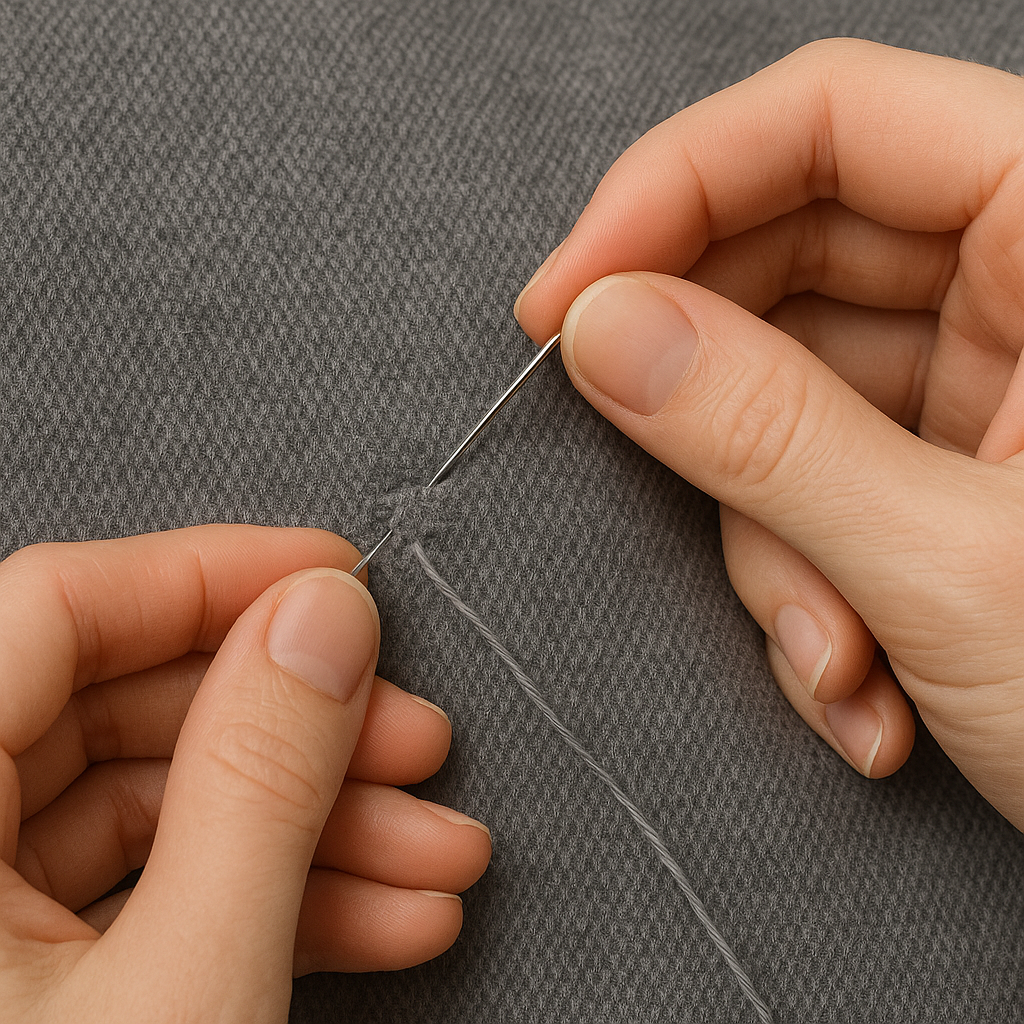Knit Repair: Restoring Fine Garments with Professional Precision

Strong 8k brings an ultra-HD IPTV experience to your living room and your pocket.
Knitwear holds a cherished place in our wardrobes—combining comfort, warmth, and style into garments that are often worn with love and longevity. Whether it's a soft merino sweater, a luxurious cashmere pullover, or a cozy cotton cardigan, knits can feel like second skin. However, due to their delicate nature, knits are also prone to damage: snags, holes, worn-out seams, stretching, or even unraveling stitches. Rather than discarding a favorite item, knit repair offers a sophisticated and sustainable solution to restore garments to their original beauty.
More than a simple fix, professional knit repair is a craft rooted in textile knowledge and technical expertise. It is the art of breathing new life into garments without compromising their structure, appearance, or comfort.
Understanding Knitwear: Why It Needs Special Care
Unlike woven fabrics, which are created by interlacing threads at right angles, knit fabrics are made by looping yarns together. This construction gives knitwear its hallmark elasticity and softness—but also makes it vulnerable to pulls, holes, and distortion when exposed to friction, improper washing, or pests like moths.
Every knit item is different. Fiber type, tension, gauge, and pattern all play a role in how it wears over time—and how it should be repaired. Whether it’s fine gauge cashmere or thick wool, a professional approach ensures the repair aligns with the garment’s original integrity.
Common Issues Requiring Knit Repair
Professional knit repair services can address a wide range of issues that naturally occur with time and wear. Some of the most frequently treated problems include:
Moth Holes: These small but destructive holes are common in natural fibers like wool, alpaca, and cashmere.
Snags and Pulls: Loose yarns from catching on jewelry, zippers, or rough surfaces.
Unraveled Seams or Edges: Stitching can come undone at cuffs, hems, or side seams.
Fabric Thinning: Worn areas, particularly at elbows, underarms, or cuffs.
Misshapen Garments: Stretching due to improper storage, wear, or cleaning.
Every one of these issues, if addressed promptly and professionally, can be corrected—extending the garment’s life significantly.
The Professional Knit Repair Process
Repairing a knit garment is both a science and an art. Professional services use a variety of textile-specific methods that are chosen based on the nature of the damage, the garment’s fiber composition, and the knit pattern. Here are some of the most common techniques:
1. Invisible Mending or Re-knitting
This method involves re-creating the knit stitches in the damaged area using matching yarn harvested from the garment itself or closely sourced. Each stitch is reconstructed manually, making it virtually indistinguishable from the original.
Ideal for: Small holes, clean tears, or fabric thinning.
Outcome: A seamless repair that blends into the surrounding knit.
2. Swiss Darning (Duplicate Stitch)
Swiss darning overlays new yarn over existing knit stitches, duplicating the pattern and reinforcing weakened areas. This technique is perfect for strengthening thinning fabric without altering its texture or appearance.
Ideal for: Reinforcing worn spots or covering minor holes.
Outcome: A nearly invisible repair that mimics the original knit.
3. Grafting
Grafting, or Kitchener stitch, is a specialized technique for joining two pieces of live knitting seamlessly. It is often used when rebuilding edges or repairing splits along seams.
Ideal for: Reconnecting edges that have unraveled or split.
Outcome: A smooth, continuous row of stitches with no obvious joins.
4. Patch Integration
When the damage is too extensive for invisible reknitting, a matching patch may be knitted and skillfully attached. Professionals ensure the patch blends well with the garment’s texture, pattern, and color.
Ideal for: Larger damaged areas or high-friction zones.
Outcome: A durable, discreet, and aesthetically pleasing repair.
Knit Repair for Luxury Fibers
Luxury knits require even greater care due to their fine fibers and higher stitch gauge. Materials like:
Cashmere
Baby Alpaca
Merino Wool
Silk Blends
...demand precision techniques and careful handling during repair. Professionals with experience in luxury knitwear restoration ensure that the softness, fit, and finish of these garments remain intact.
When Should You Seek Professional Knit Repair?
Not all damage is immediately visible. Subtle signs like thinning fabric, uneven texture, or shifting seams may be early indicators that your garment needs repair. Here are clear signs it's time to consult a professional:
Holes or snags in visible areas like the chest, sleeves, or collar
Uneven hems or twisted shapes after laundering
Discomfort due to pulled threads or rough textures
Historical, vintage, or sentimental value attached to the garment
Timely intervention prevents small issues from becoming major problems and protects the long-term integrity of your knitwear.
Advantages of Choosing Professional Knit Repair
Whether your motivation is sentimental or sustainability-driven, choosing professional knit repair over disposal or replacement comes with significant benefits:
1. Expertise with Complex Garments
Professionals understand how to handle various yarn types, knit densities, and stitching methods. They also have the tools and techniques to perform intricate work that laypeople cannot replicate.
2. Precision and Seamless Finish
The goal of professional repair is to make the fix invisible. This requires deep knowledge of knit structures and fiber behavior.
3. Preservation of Shape and Fit
Stretching, warping, or incorrect tension can destroy a sweater’s silhouette. Experts ensure that your garment retains its original shape.
4. Sustainability
Repairing garments rather than discarding them supports ethical, sustainable fashion by reducing textile waste and promoting longer use cycles.
Caring for Your Knits After Repair
Once your knitwear is restored, proper maintenance can prevent future damage and extend the life of the garment:
Store flat, never on hangers, to avoid shoulder distortion.
Use breathable garment bags for off-season storage, preferably with cedar or lavender sachets.
Follow fiber-specific washing guidelines, ideally using cold water and gentle handling.
Air dry on a flat surface to retain shape and elasticity.
By treating your knits with care, you can minimize future repairs and enjoy your garments for years to come.
Final Thoughts
Knitwear combines comfort, versatility, and timeless appeal—but it also requires mindful care. When your favorite sweater or cardigan shows signs of wear, tear, or damage, don’t rush to retire it. Instead, turn to the expertise of knit repair professionals who can restore it with precision and respect for the original craftsmanship.
By embracing the art of repair, you not only preserve beloved garments but also support sustainable fashion practices that value longevity over disposability. Knitwear is meant to be worn, loved, and lived in—and with expert repair, it can be enjoyed far beyond a single season.
Note: IndiBlogHub features both user-submitted and editorial content. We do not verify third-party contributions. Read our Disclaimer and Privacy Policyfor details.


